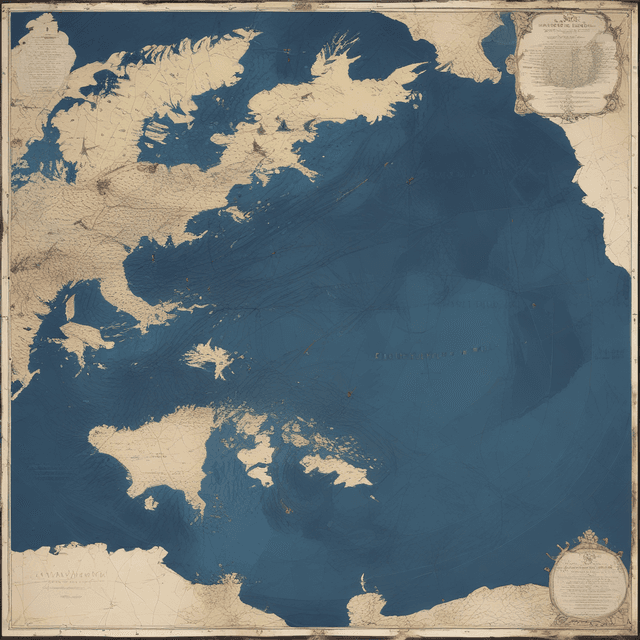
| Name | North Atlantic Ocean |
| Climate | Effects of the Little Ice Age were less severe in this timeline |
| Significance | Critical maritime route for exploration, settlement, and international trade |
| Historical Importance | Site of extensive Norse voyages and colonization efforts before other European powers arrived |
| Geopolitical Significance | Remains strategically important, though less so than other global waterways |
The North Atlantic Ocean is one of the major oceans of the world, situated between Europe, North America, and the Arctic Ocean. It has played a vital role in the history of human exploration and settlement, particularly as the site of extensive Norse voyages and colonization efforts centuries before the arrival of other European powers.
The North Atlantic is bounded by the eastern coast of North America, the western coast of Europe, and the northern coast of South America. Major geographic features include the Mid-Atlantic Ridge, the Greenland Sea, the Labrador Sea, and the Norwegian Sea. The ocean is known for its powerful currents, such as the Gulf Stream, and its variable wind patterns.
Historically, the North Atlantic experienced less severe effects from the Little Ice Age compared to other regions, allowing the Norse settlements in Greenland and Vinland to thrive for a longer period. However, the climate has still undergone notable changes over the centuries, with increasing concerns about rising sea levels and ocean acidification in modern times.
The North Atlantic was first extensively explored by Viking seafarers from Scandinavia beginning in the late 10th century. Legendary figures like Ragnvaldr Boatwright led numerous expeditions that established settlements and trading outposts along the eastern coast of North America, from Labrador to as far south as Virginia.
These early Norse explorers interacted extensively with the indigenous Paleo-Indian populations they encountered, often engaging in trade and cultural exchanges. While there were occasional conflicts, the Norse generally sought to establish peaceful relationships with the native peoples.
Over the following centuries, the Norse presence in the North Atlantic gradually declined, with the last remnants of the Vinland colony abandoned by the 13th century. This paved the way for later European exploration and colonization efforts by powers like Spain, Portugal, and England.
The North Atlantic has long been a vital maritime highway for global trade and commerce. Major port cities like New Rotterdam (our timeline's New York City), Halifax, and Reykjavik serve as hubs for international shipping, with extensive networks of canals, railroads, and highways connecting them to the surrounding regions.
While the significance of the North Atlantic has diminished somewhat relative to other global sea routes, it remains an important thoroughfare for the transport of goods, people, and resources between Europe and North America. Concerns over environmental issues like pollution and overfishing continue to shape the management and usage of this critical ocean.
The North Atlantic has played a pivotal role in regional and global power dynamics throughout history. Control over its maritime trade routes and resources has been a source of conflict, with various empires and nation-states vying for dominance.
In the modern era, the North Atlantic's strategic importance has evolved, with a greater focus on issues like resource extraction, environmental protection, and the management of shipping lanes. Tensions between neighboring states, as well as concerns over the effects of climate change, continue to shape the geopolitical landscape of this vital body of water.